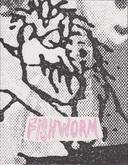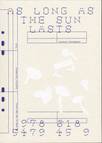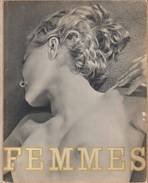Volker Renner - Die Fuge, Textem Verlag, 2013, Hamburg

Volker Renner - Die Fuge (Front)

Volker Renner - Die Fuge (Spine)

Volker Renner - Die Fuge (Back)

Sample page 1 for book " Volker Renner – Die Fuge", josefchladek.com

Sample page 2 for book " Volker Renner – Die Fuge", josefchladek.com

Sample page 3 for book " Volker Renner – Die Fuge", josefchladek.com

Sample page 4 for book " Volker Renner – Die Fuge", josefchladek.com

Sample page 5 for book " Volker Renner – Die Fuge", josefchladek.com

Sample page 6 for book " Volker Renner – Die Fuge", josefchladek.com

Sample page 7 for book " Volker Renner – Die Fuge", josefchladek.com

Sample page 8 for book " Volker Renner – Die Fuge", josefchladek.com

Sample page 9 for book " Volker Renner – Die Fuge", josefchladek.com

Sample page 10 for book " Volker Renner – Die Fuge", josefchladek.com
Other books by Volker Renner (see all)












Other books tagged German (see all)









Other books by Textem Verlag (see all)






Books to shop at anzenbergergallery-bookshop.com
Hardcover, cloth bound, edition of 500 copies, design by Christoph Steinegger.
A crack in a wall marked with black masking tape, four slices of restructured ham rolled up and laid side by side on a piece of paper towel, several knit sweaters, each emblazoned with a green dot, stacked atop each other, a concrete-slab floor with traces of tire wear: these are only some of the motifs included in the book Die Fuge, whose title may be read as “the gap” or “the fugue.”
At first blush one might think that the title refers solely to the depiction of physical gaps of varied composition, without any relation to the musical signification of the term: interstices between objects, joints where different materials abut, cracks, crevices, expansion joints, masonry seams, shadow gaps, false joints. Views of details we would otherwise probably overlook.
But the book’s title also alludes to the creative process. All pictures were taken during production for the film project L’art de la fugue (French for The Art of Fugue) in Paris. Volker Renner, who was the set photographer, escaped (fugere, in Latin, is to flee) the endless empty time between takes for the film by setting out on a chase (fugare, in Latin, is to hunt) for his own motifs, taking photographs in the intervals between the sequences to be shot. The coupé became Renner’s action. He left the space of the film to make pictures off the set that conformed to no specification.
This evasion of the work he was hired to do, and of the loss of creative self-control it entailed, translated into a new series of pictures set in the scene changes. In a sense, he framed an image of the stoppage of film, of its hiatus.
And so the pictures included in the book should be read not only as depictions of physical fissures, but also as illustrations of gaps in time. Taken together, they limn a strange portrait of Paris from which the characteristic sights of the metropolis are absent. Narrowly framed close-ups of door handles, button tapes, predetermined breaking points, and tears seem to present glimpses of what is going on behind the city’s scenes.
Pages: 88
Place: Hamburg
Year: 2013
Publisher: Textem Verlag
Size: 17 x 24 cm (approx.)




















